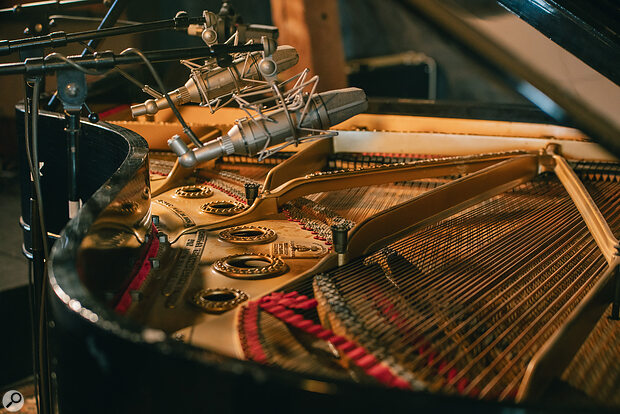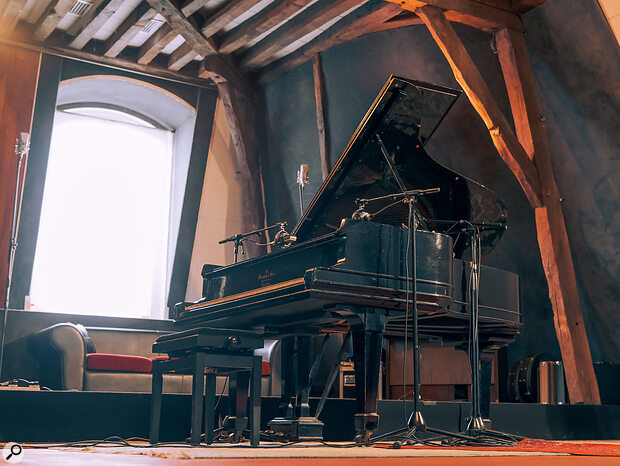Lovingly restored, and then lovingly sampled, Spitfire’s Château Piano recreates a pop icon.
When you play Heardle for long enough — the game which challenges you to guess the song by listening to tiny sections of it — you begin to realise that the sound of an iconic artist is often instantly recognisable, even if you don’t know their entire catalogue very well. That’s how I ended up correctly guessing several Elton John deep cuts, just from the sound of his piano. In their new release Château Piano, Spitfire Audio bottle up that distinctive sound and bring it to your DAW in a remarkably light (19GB) sample library that runs in Spitfire’s Ensemble plug‑in.
The château in the title refers to Château d’Hérouville aka Strawberry Studios, considered to be the world’s first residential recording studio, and the piano is the 1901 Steinway B grand that resides in the château. Before the studio closed in 1985, Elton John was not the only artist making career‑defining records there; fellow legends David Bowie, Fleetwood Mac, Pink Floyd, the Bee Gees, Jethro Tull, and many others walked through its doors, sat at the Steinway in the George Sand live room, and conjured up the sound of rock and pop history.
In 2015, sound engineers and musicians Jean Taxis and Thierry Garacino bought the château and began the painstaking task of renovating the space and restoring the piano. In the hands of master tuner Bastien Herbin, the restoration aimed to bring the piano back to life “while preserving its personality”. The team at Spitfire Audio took on the task of sampling the piano and keeping the sound as authentic as possible.
In The Box
Sound and playability are the primary metrics that influence the decision to purchase a sample library, and with Château Piano’s source material so steeped in history, the sound of the instrument is definitely the key draw. The Spitfire team have gone to great lengths to capture the sonic essence of the instrument using a collection of valve and capacitor microphones, including, the literature tells us, “a pair of vintage Neumann U67s in the same positioning as [on] the original Elton John recordings”.
 Great attention was paid to recreating authentic mic setups from the records associated with Château d’Hérouville.
Great attention was paid to recreating authentic mic setups from the records associated with Château d’Hérouville.
The piano has been captured with five dynamic layers and three round robins per note (pedal up and pedal down), except in the lowest range (A0‑A#1) and highest range (C7‑C8), which have two round robins. Samples are grouped into six categories: from the bare‑bones Natural to the heavily processed Effected presets.
The library offers eight signals in total: Close, which captures the direct sound of the piano strings; Super Close, which has microphones placed near the hammers; Room, a stereo signal which captures the acoustics of the George Sand live room;...
You are reading one of the locked Subscribers-only articles from our latest 5 issues.
You've read 30% of this article for FREE, so to continue reading...
- ✅ Log in - if you have a Digital Subscription you bought from SoundOnSound.com
- ⬇️ Buy & Download this Single Article in PDF format £0.83 GBP$1.49 USD
For less than the price of a coffee, buy now and immediately download to your computer, tablet or mobile. - ⬇️ ⬇️ ⬇️ Buy & Download the FULL ISSUE PDF
Our 'full SOS magazine' for smartphone/tablet/computer. More info... - 📲 Buy a DIGITAL subscription (or 📖 📲 Print + Digital sub)
Instantly unlock ALL Premium web articles! We often release online-only content.
Visit our ShopStore.

